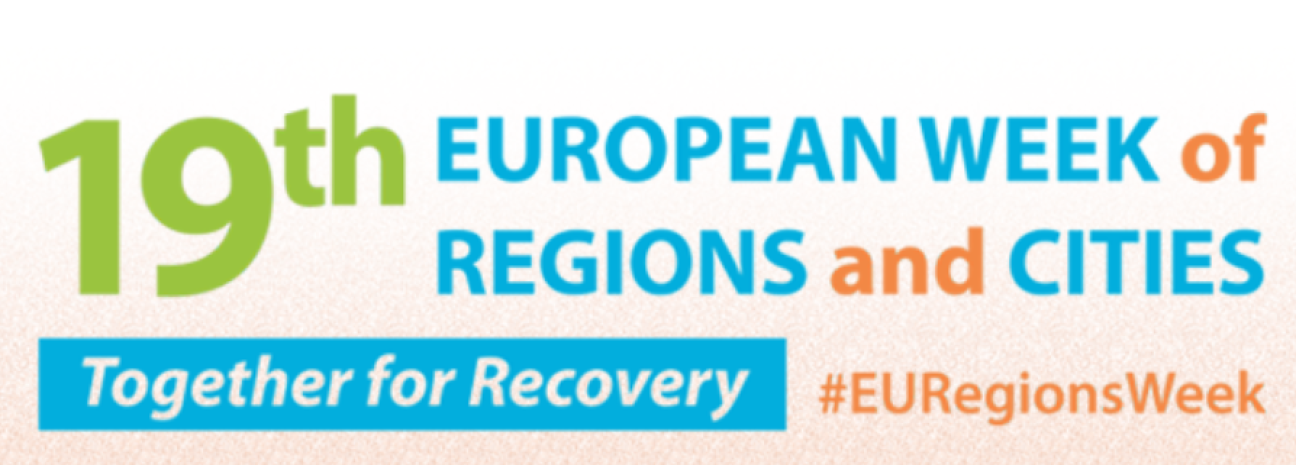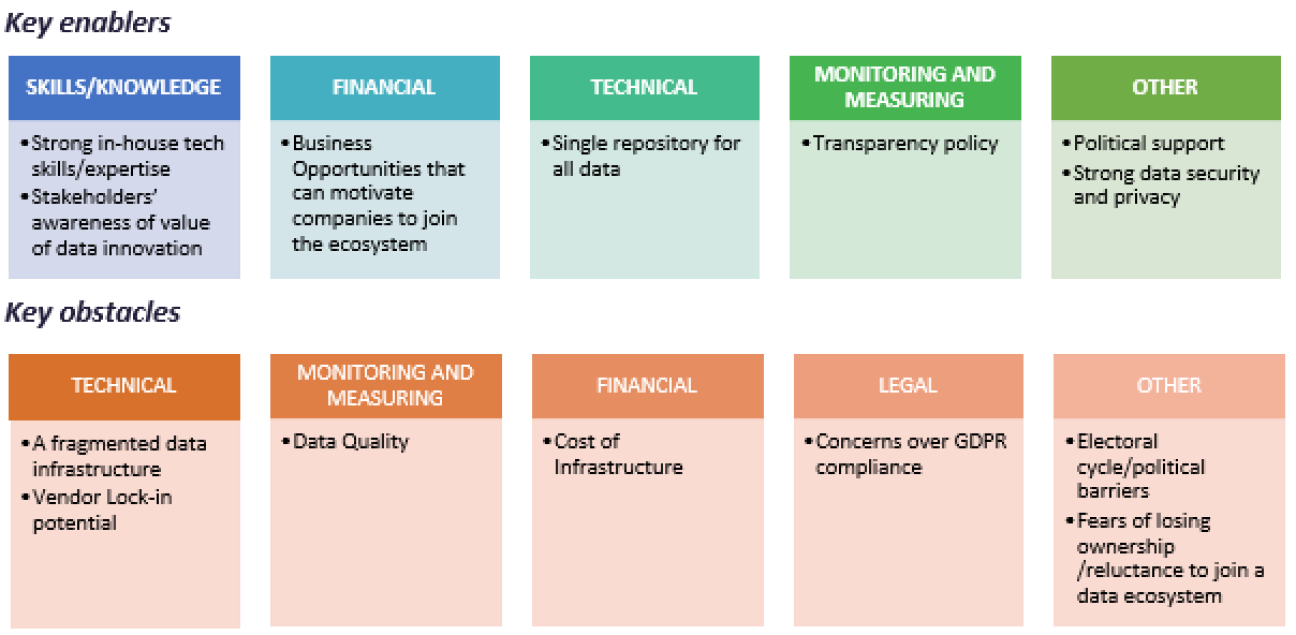
On 13 October, ELISE took part in the 19th edition of the European Week of Regions and Cities (EWRC) with the participatory lab ‘How innovation in location services and data ecosystems can help transform your city and region’. Speakers of the event included Sven Schade and Alexander Kotsev, scientific officers of the European Commission’s Joint Research Centre (JRC); Giovanna Galasso, Government & Public Sector Director at Intellera Consulting; Danny Vandenbroucke, research manager at KU Leuven; Martin Brynskov, Michael Mulquin, and Cornelia Dinca from the Open & Agile Smart Cities Association (OASC).
The European Week of Regions and Cities run from the 11 to 14 October, jointly organised by the European Commission and the European Committee of Regions. The 4 days event gathered European, national, regional and local government officials and experts, representatives of private companies, financial institutions, academics and researchers to discuss Green transition, Digital transformation and citizens engagement.
This interactive event provided practical insights and stimulated discussions on location-enabled public services and data ecosystems at the city and regional levels. Following a plenary introduction, attendees could choose between two different journeys, based on recent research conducted by JRC: “Innovative use of location data and technologies to improve public services” and “Regional and local data-driven innovation through collective intelligence and sandboxing”.
The success of this participatory lab was confirmed by the presence of more than 80 participants.
Journey 1: Innovative use of location data and technologies to improve public service
This journey showcased how European cities and regions successfully use location data and technologies to improve their public services. Elaborating on the recently published “Leveraging the Power of Location Information and Technologies to Improve Public Services at the Local Level. State of the Art Report”, the attendees had the chance to dive into two case studies demonstrating the innovative use of location data and technologies in generating public value. The first case study of the ‘Comuni-Chiamo’ project was presented by Gilberto Cavallina, founder and professor at the University of Bologna. The second one of the Navarra Geoportal was presented by Maria Cabello, European Projects Director at TRACASA.


After presenting the two use cases, the attendees shared their experience and feedback on the potential of using location data and technology at the local and regional level.
During the discussion, the participants identified the following main challenges for the use of location data and technologies in public services:
- Keeping the citizens engaged in the use of solutions to improve public services.
- Overcoming demographic barriers (for example, different ages) that might limit the use of new technologies; traditional tools (such as phone calls) should remain available and integrate with new ones.
- Maintaining high quality data in a consistent format to ensure their reuse in different solutions.
The journey concluded by highlighting the main takeaways identified during the discussion on using location data and technologies to improve public services.
The main take-aways identified by the participants were:
- The use of location data and technologies can improve the quality of public services, allowing for instance more timesaving for both citizens and public administrations.
- Open Data can represent an important informational service for the local community, from research to businesses and citizens in general.
Innovation is fostered by tools that are fun to use and that allow users experimenting new ways of exploring and using data.
Journey 2 Regional and local data-driven innovation through collective intelligence and sandboxing
This journey explored the main obstacles and the key enablers for developing data ecosystems in different European cities while discussing the potential of a “sandboxing” methodology to help local administrations test innovative data-driven solutions in an agile and inclusive manner.
This journey presented the results of an analysis of the data ecosystems of two European cities, Helsinki (FI) and Milan (IT), from the recent study “Regional and local data-driven innovation through collective intelligence and sandboxing”. In addition, participants had the chance to identify and discuss the most relevant opportunities and barriers in an interactive discussion.

The journey focused on how various cities taking part in the study have used a sandboxing methodology to strengthen their data ecosystems.
Key elements of a sandboxing process:
- It aims at addressing concrete challenges (‘pain points’).
- It involves systematic experimentation.
- It provides a safe testing environment before moving to production.
- It is not simply technical, but brings people around the table to test out also operational and legal issues.
- It supports multi-stakeholder co-creation and dialogue.
In particular, the discussion analysed the potential of applying such a methodology in local contexts to experiment with innovative data-driven tools, approaches and models.
Timo Ruohomäki (Program Director of Data and IoT at Forum Virium Helsinki) presented how Helsinki is moving from a “closed box” way of delivering services to a delivery flow. This can be observed in the DevOps practice, joining IT development and operations. The sandbox concept is used to fully embrace fluidity and requires skills to work with the data more focused on the functional side than on the technical side.
Consequently, Marco Lombardo (IT Department, City of Milan) presented the case of Milan, where private companies are ready to share and make data openly available. There is now a raising awareness among Italian municipalities on the priority to have access to open data (e.g. through Application Programming Interfaces - APIs). This can be best experimented with within a sandbox environment to understand all implications of opening data before moving to a production environment.
As made evident from the key obstacles shown above, there are still some real challenges in how cities set up the data ecosystem process both from an organisational and contractual point of view. Still, the powerful sandbox approach could leverage the potential of open architectures and scale up the potential of data.

